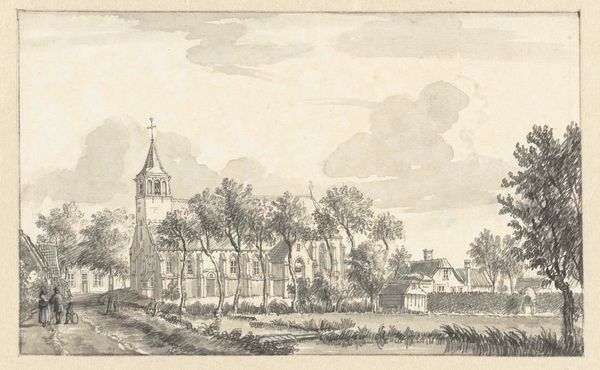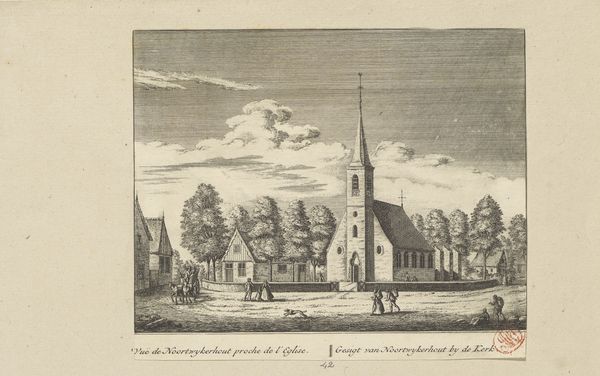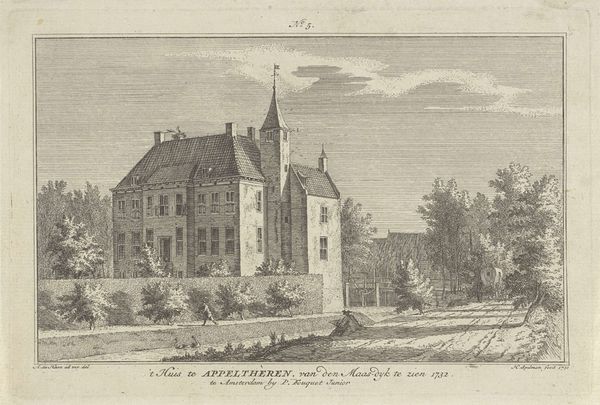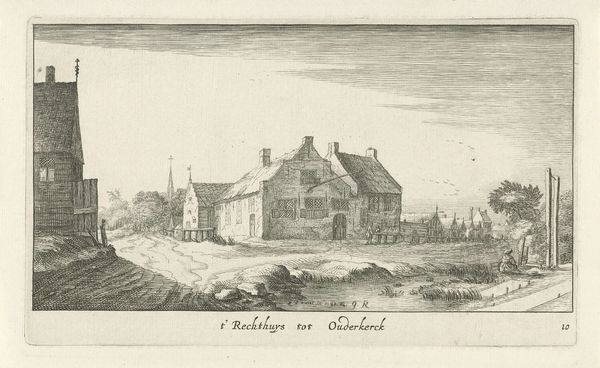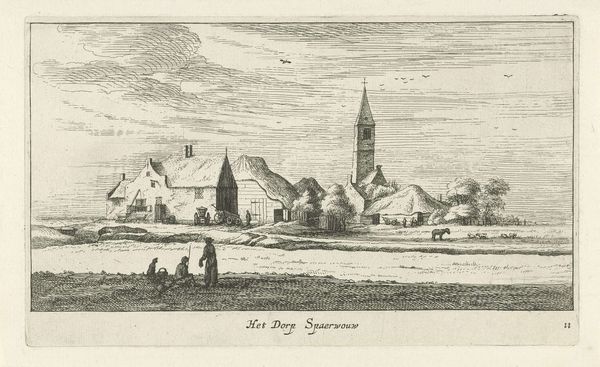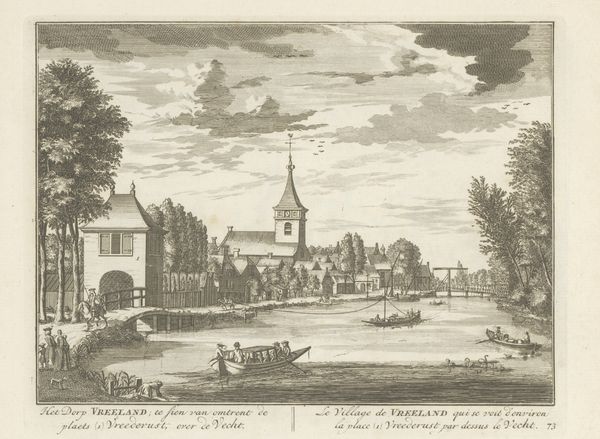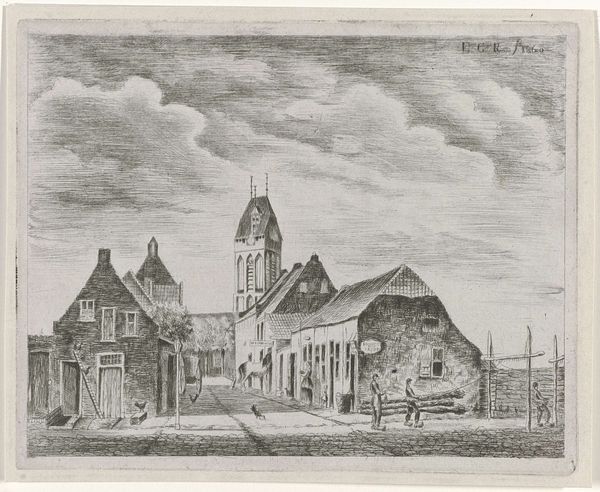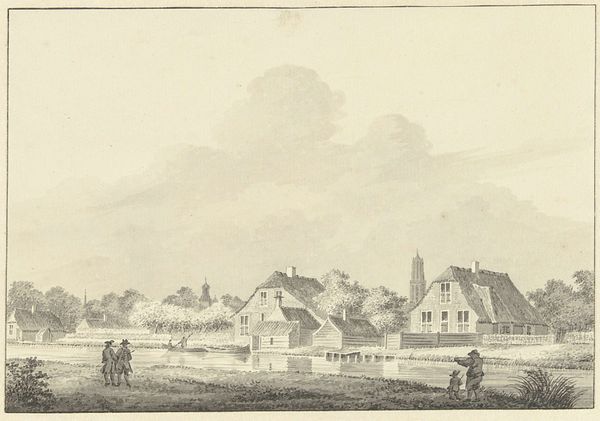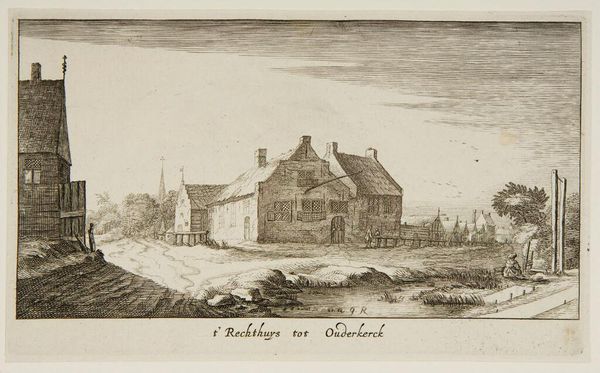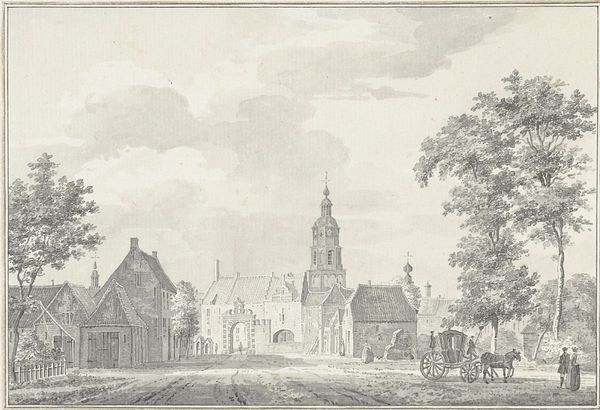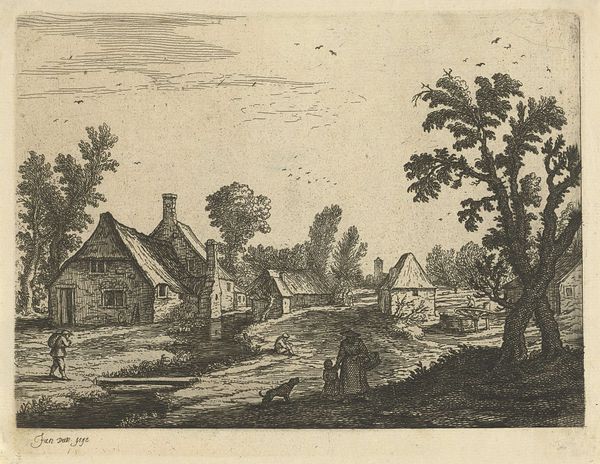
print, etching, engraving
#
dutch-golden-age
# print
#
etching
#
landscape
#
cityscape
#
engraving
#
realism
Dimensions: height 80 mm, width 115 mm
Copyright: Rijks Museum: Open Domain
Abraham Rademaker’s ‘Sloterdijk’, an etching now held at the Rijksmuseum, presents a village scene dominated by linear precision and structured composition. The monochromatic palette allows a focus on form, where the artist’s lines define the architecture and landscape with remarkable detail. The balanced distribution of elements creates a serene, ordered vista, inviting the viewer into a space that feels both real and constructed. Rademaker's approach reflects a formalist concern with the visual elements as self-contained systems. The lines do not merely represent objects but create a semiotic structure, a language of forms that communicate stability, order, and a controlled relationship between nature and human construction. Notice how the hatching and cross-hatching simulate depth and texture, but more importantly, establish a structured visual logic. Rademaker's precise rendering encourages us to interpret the landscape not as a mirror of reality but as a constructed image governed by rules and conventions. The emphasis on structure over pure representation suggests a world understood through order, aligning with the philosophical leanings towards rationalism during the period. By understanding the semiotic function of line, shape, and space, one can appreciate the depth of meaning conveyed through formal devices.
Comments
No comments
Be the first to comment and join the conversation on the ultimate creative platform.

